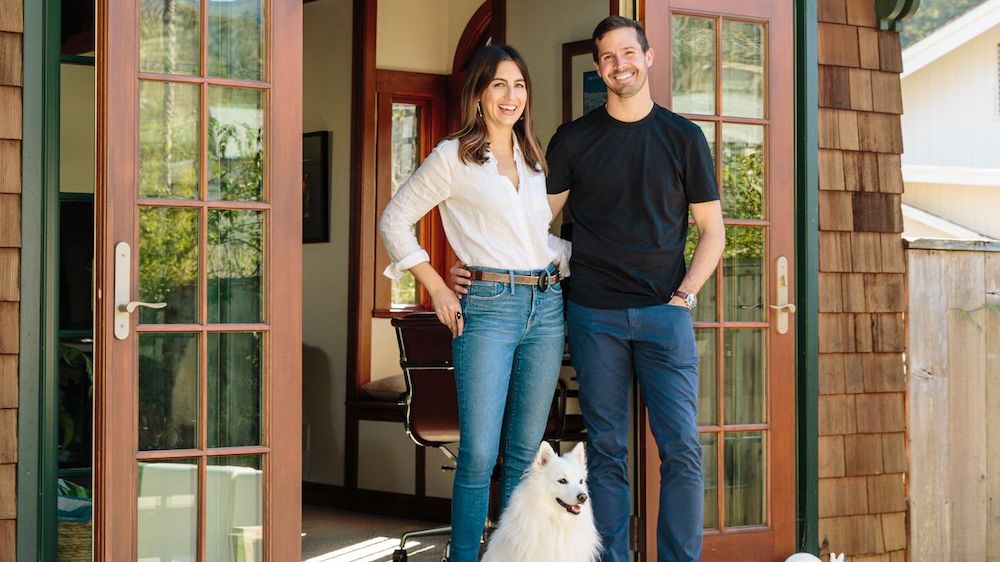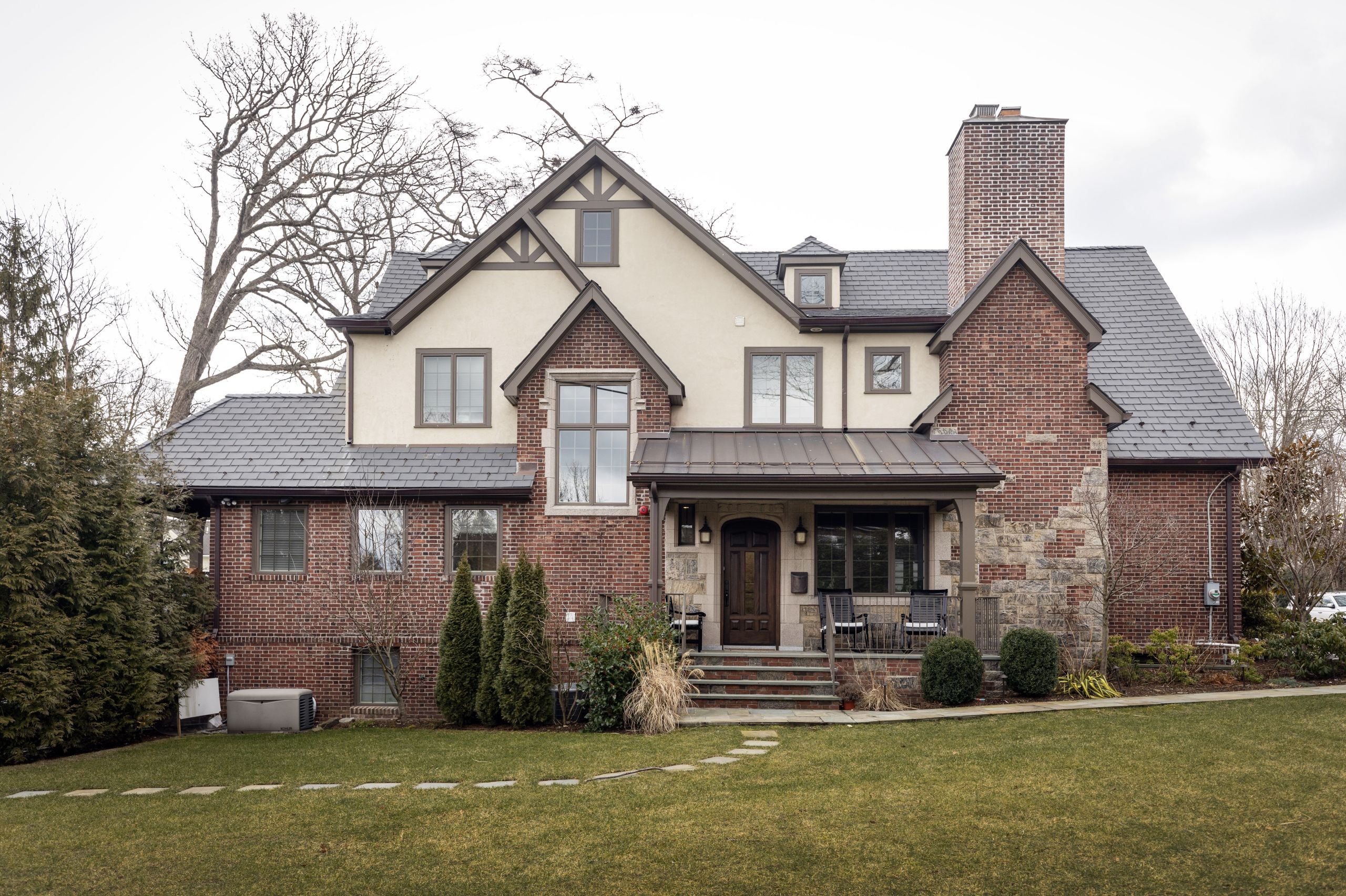
Alanna Hale for The Wall Street Journal
When Reny Huelskamp, 34, and her husband Paul Huelskamp, 36, decided to move out of their San Francisco rental and buy their first home, they were drawn to Mill Valley, Calif., about 20 minutes from San Francisco. In May, they closed on a $2 million, roughly 2,000-square-foot house with a pool about a block from a lively town square.
“If you grab coffee at the coffee spot downtown, there’s a palpable sense of community,” said Mr. Huelskamp, a developer of solar and wind power plants. “You’ll see tons of young families, with their kids and dogs.”
The Huelskamps didn’t set out to be poster children for Wealthy Millennial Home Buyers, but in fact their choices nearly perfectly represent what agents say are the trends for this age group. Their choice of a close-in suburb with a short commute, willingness to trade size and space for a walkable area, and rejection of traditional sleepy suburban landscapes are classics of their age cohort. The only way in which they differ: Their brown shingled house needed a small amount of renovation, they said, something many of their contemporaries abhor. These generational habits are so pervasive that they are anointing new areas as ultraluxury spots and sending some previously desirable locations into a downward price spiral.
This group’s preference for move-in-ready homes is also shifting the burden of fixing up older homes onto sellers, and giving rise to new business models for real-estate brokerages and home builders.
Unlike members of their generation who can’t buy houses because of student debt and slow-to-build careers, some do have the money to buy their dream homes. There are 618,000 people between the ages of 24 and 38 who have a net worth of $1 million or more, according to a recent report published by WealthEngine, a data provider, and Coldwell Banker.
Alanna Hale for The Wall Street Journal
For veteran real-estate agents, many younger buyers’ definition of a dream home runs directly counter to what they understand about luxury real estate. While real-estate value—and appeal—has long been predicated on square footage, agents say this generation of young families are unimpressed with large homes and lots. Boulevard Realty agent Rhonda Power, who has sold real estate in Houston for 17 years, had a property to show a couple in their 30s and their two young kids. The $600,000 house, smack in Houston Heights—an increasingly popular area near downtown—was puny by Texas standards, at 1,500 square feet, but sat on a generous 10,000-square-foot lot.
The couple’s response shocked her. “They liked the house size, but one of the drawbacks for them was the bigger lot,” she said, laughing in astonishment. The couple said their kids “would rather just go to the nearby park, and they weren’t sure they wanted to spend a lot of time maintaining that much space,” Ms. Power said.
Alanna Hale for The Wall Street Journal
By eschewing huge homes—even when they can afford them—current buyers promise to reshape a number of suburban markets that used to successfully offset longer commutes with more space. Today, close-in communities—even with smaller homes—are big winners.
When Kimberly FitzSimons, 40, moved from Chicago so her husband could take a job in Manhattan, her first comment to him was, “You can’t be too far away. You need to be close to the family,” said Ms. FitzSimons, a graphic designer with three children. So the couple bought a four-bedroom, 2,800-square-foot house in Pelham, a 35-minute train ride to Grand Central Station in New York City. Though they had looked for homes in ritzier New York suburbs including Rye and Larchmont, Ms. FitzSimons said proximity to the city mattered more. In May, the family moved into another Pelham home for $1.975 million, said Ms. FitzSimons.

Dorothy Hong for The Wall Street Journal
Holly Mellstrom, an agent with Julia B. Fee Sotheby’s International Realty, said both the house the FitzSimonses sold and the one they bought are precisely the kind of homes buyers under 40 want. When she wrote the listing verbiage for the house they sold, she described it as a “unicorn,” extolling its location “two blocks from the station and main street,” its renovated, open layout and “white kitchen with gleaming professional appliances.”
“I speak millennial,” said Ms. Mellstrom. The home received 4 offers and sold $56,000 over the asking price at $1.355 million.
Dorothy Hong for The Wall Street Journal
Towns like Pelham—close to the big cities where one or both members of a couple work and with access to the culture they value—are popular with young buyers, real-estate agents say. Evanston, just outside Chicago, and closer-in areas like Winnetka and Wilmette attract them, said Erica Goldman, an associate broker with Jameson Sotheby’s International Realty. Meanwhile, younger buyers “aren’t flocking” to Lake Forest, she said, mentioning a further-out suburb that once represented the pinnacle of suburban success but which has been mired in a multiyear slump. Median sales prices a square foot illustrate the shift: In 2011, Lake Forest luxury homes sold for a median per-square-foot price 11% higher than luxury homes in Evanston; today, they sell for nearly 13% less than in Evanston.
Dorothy Hong for The Wall Street Journal
Many expensive suburbs are feeling pressure because leaving city life behind is no longer a cultural must-do. Kristin Odegaard, a 34-year-old director of merchandising and her husband Anush Elangovan, a 42-year-old technology executive, nearly put an offer on a $3.4 million, seven-bedroom spread in Piedmont, Calif., a suburb 11 miles east of San Francisco with “great schools,” Ms. Odegaard said. But ultimately, they couldn’t bring themselves to leave San Francisco, she said. They are currently hunting for city homes in the $3 million to $3.5 million range; if they don’t find what they want, they may just renovated their current home, she said.
Today, people in their 30s and early 40s experience a “delayed life cycle,” said Dowell Myers, a professor of urban planning and public policy at the University of Southern California. Because they mature, marry and have children later than any previous generation, “they still act like they’re in their 20s,” he said.
If they do move to the suburbs, they still want to socialize, which has given rise to a price divide within suburbs between walkable and non-walkable areas.
In Mill Valley, homes in the downtown area sell for 32% more a square foot than the average for the city, which includes many homes up in the hills, said Logan Link, a Compass agent who represented the Huelskamps when they bought their house.
“This makes sense,” said Ms. Link. “The number one thing most of my clients are looking for is a sense of community.”
Alanna Hale for The Wall Street Journal
In Greenwich, Conn., luxury estates in the “backcountry” are worth only 0.73% more a square foot than they were in 2011, while in-town luxury home values a square foot have grown by 2.3% in the same period, according to an analysis by Attom Data Solutions. Dominic Labriola, co-founder of Craft & Bauer Real Estate, a Los Angeles brokerage, said even in Los Angeles “hillside neighborhoods are less and less of a status symbol for this generation.”
Instead, what these buyers value are brand-new or fully renovated homes. George Adamczyk, owner of Adamczyk Fine Homes & Interiors in Evanston, Ill., said he has given up building spec and custom homes and now markets a service he calls “Let’s Sell It.” He prospects for clients by searching for homes in the Chicago suburbs over $1 million that are over 50 years old and have been on the market for several months. When he gets a bite, he goes through the house and draws up a list of things the seller should change before marketing the house.
“Young people don’t want to ‘put their stamp on it,’” Mr. Adamczyk said. “They want clean, crisp and defect free.” He is currently doing a roughly $500,000 remodel of a Burr Ridge, Ill., house he built for a client 25 years ago.
“The client realizes that he will ‘never,’ his words, sell the house unless he fixes it up,” he added.
Real-estate brokerages Compass and Redfin both have new programs named “Concierge” which front some home sellers money and advice on how to upgrade properties. On closing, sellers pay back principal plus fees.
Once the house is updated, agents said the next priority is to paint it in a color scheme that appears to dazzle young buyers with near-totemic power.
“We tell sellers if they have the money, we do recommend that they paint it white and one of the 50 shades of gray,” said Ms. Mellstrom.
The post Wealthy Millennial Home Buyers Are Trading Sleepy Suburbs for Smaller Houses and Shorter Commutes appeared first on Real Estate News & Insights | realtor.com®.
via Wealthy Millennial Home Buyers Are Trading Sleepy Suburbs for Smaller Houses and Shorter Commutes

No comments:
Post a Comment